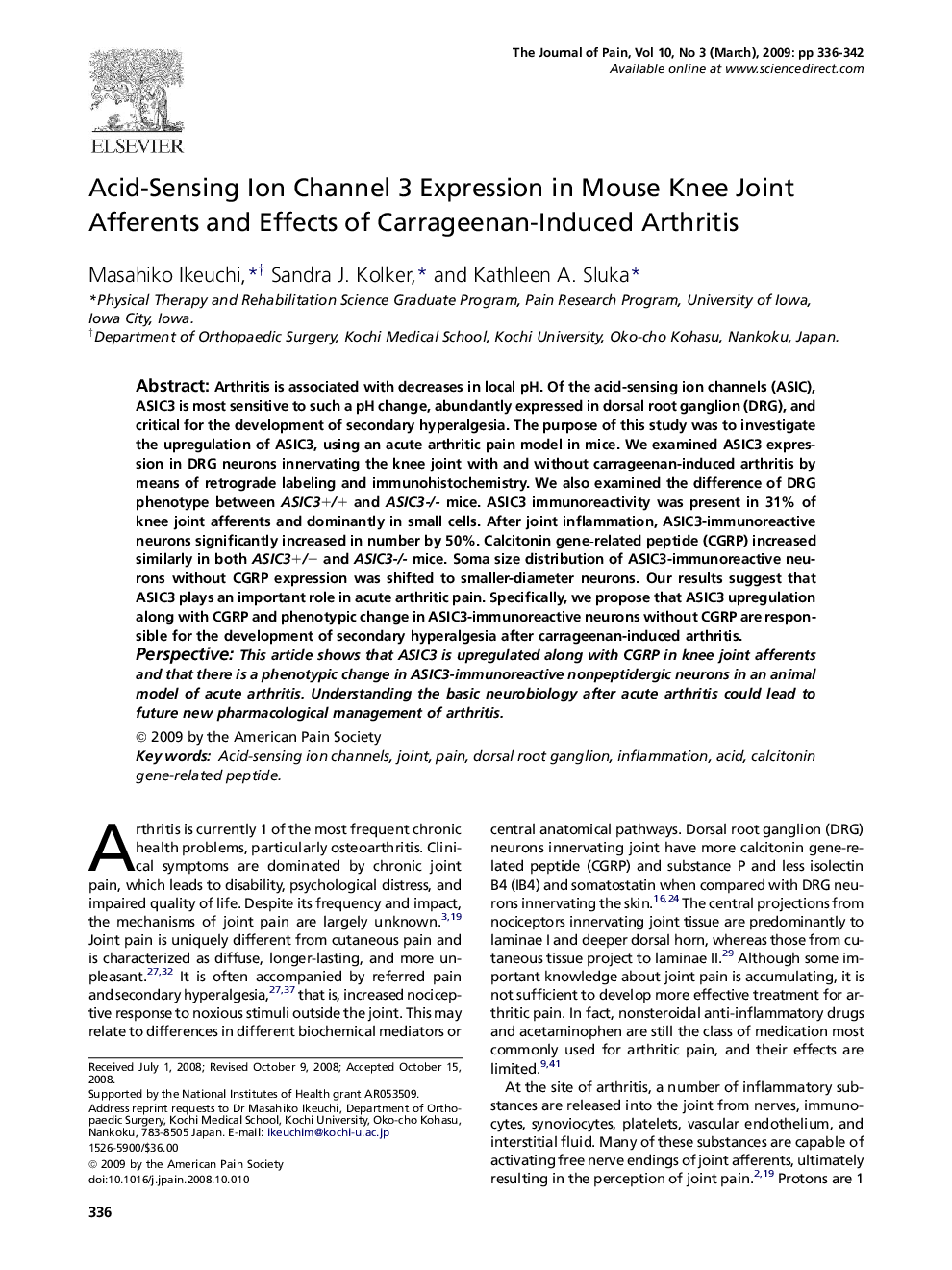| Article ID | Journal | Published Year | Pages | File Type |
|---|---|---|---|---|
| 2723587 | The Journal of Pain | 2009 | 7 Pages |
Arthritis is associated with decreases in local pH. Of the acid-sensing ion channels (ASIC), ASIC3 is most sensitive to such a pH change, abundantly expressed in dorsal root ganglion (DRG), and critical for the development of secondary hyperalgesia. The purpose of this study was to investigate the upregulation of ASIC3, using an acute arthritic pain model in mice. We examined ASIC3 expression in DRG neurons innervating the knee joint with and without carrageenan-induced arthritis by means of retrograde labeling and immunohistochemistry. We also examined the difference of DRG phenotype between ASIC3+/+ and ASIC3-/- mice. ASIC3 immunoreactivity was present in 31% of knee joint afferents and dominantly in small cells. After joint inflammation, ASIC3-immunoreactive neurons significantly increased in number by 50%. Calcitonin gene-related peptide (CGRP) increased similarly in both ASIC3+/+ and ASIC3-/- mice. Soma size distribution of ASIC3-immunoreactive neurons without CGRP expression was shifted to smaller-diameter neurons. Our results suggest that ASIC3 plays an important role in acute arthritic pain. Specifically, we propose that ASIC3 upregulation along with CGRP and phenotypic change in ASIC3-immunoreactive neurons without CGRP are responsible for the development of secondary hyperalgesia after carrageenan-induced arthritis.PerspectiveThis article shows that ASIC3 is upregulated along with CGRP in knee joint afferents and that there is a phenotypic change in ASIC3-immunoreactive nonpeptidergic neurons in an animal model of acute arthritis. Understanding the basic neurobiology after acute arthritis could lead to future new pharmacological management of arthritis.
